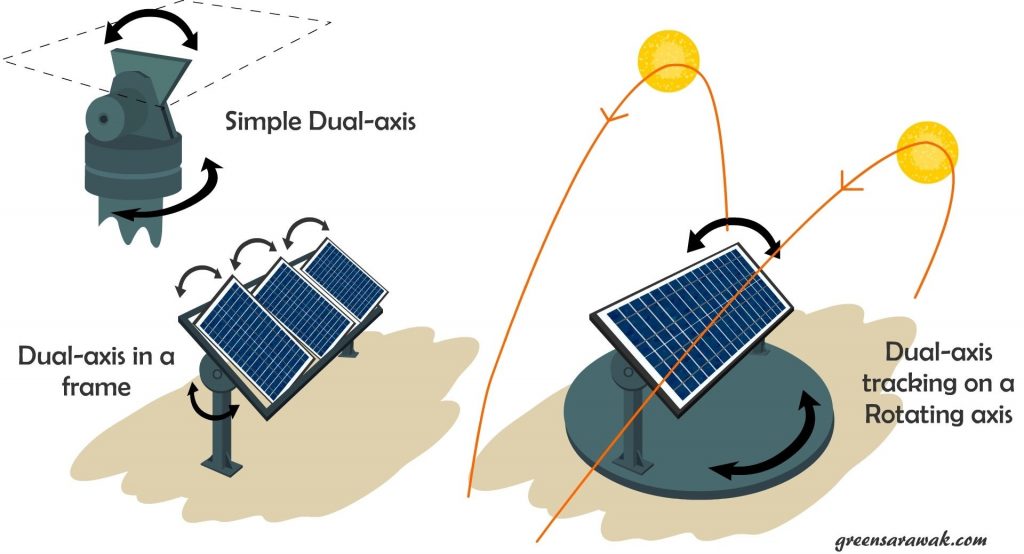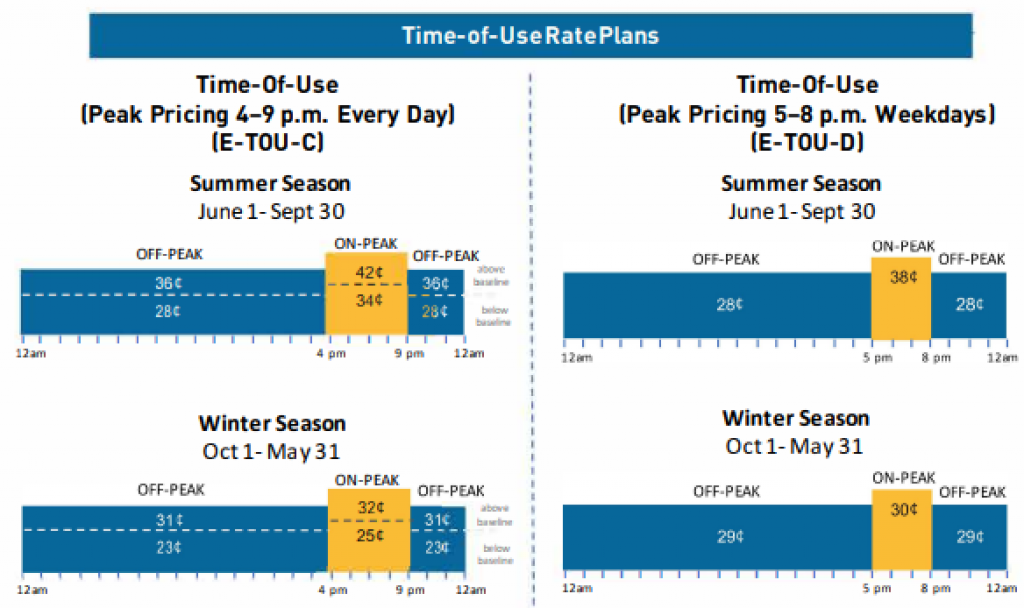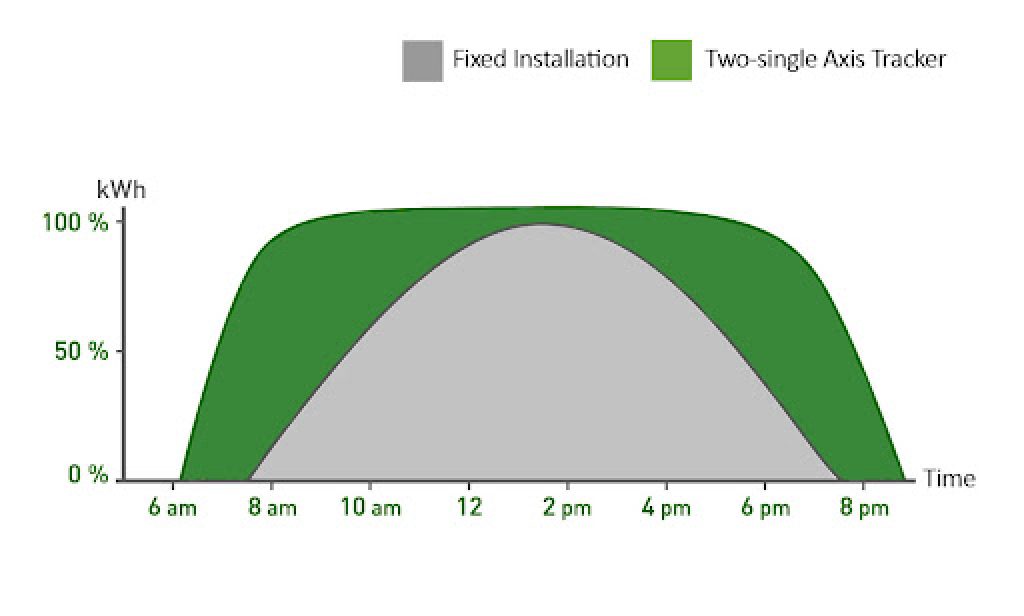Let’s face it; if you clicked on this article, you likely ran across the phrase “sun tracking solar panel” enough times to pique your curiosity about what it is exactly.
If you have been reading about solar installations long enough, you’ll know how important a panel’s tilt and direction are for maximum energy production.
Also, it is highly likely that some of you are already wondering at this point whether there are methodologies out there that take solar energy production to the next level.
Don’t worry. Curiosity won’t kill the cat in this case. Instead, see it as a sign of a budding intermediate-level solar enthusiast who wants to optimize his/her solar investment some more.
As long-time experts in green energy, we understand how you feel entirely. In fact, we welcome this level of enthusiasm by nurturing it with more intricate articles for you, starting with this one about sun trackers.
#TeamGreenTechSavvy
Now, let’s celebrate your newfound spark with an additional term for your green energy glossary: Solar Energy Optimization.
Put another way, solar energy optimization is a rabbit-hole concept of spending more money in exchange for better yield either in your energy production or monetary goals.
A deep dive into this realm usually leads to questions about:
- Energy Storage Systems
- Energy Arbitrage
- Heat Pump Optimization
- Renewable Tax Incentives
- Direction and Tilt
- Vehicle-to-Grid applications
- Behind-the-meter policies; and
- Upcoming opportunities relative to green energy outlook.
The list just keeps on growing! Doesn’t it excite you? We hope yes.
Topics like these are usually discussed using sensitivity analysis. Studies exploring the chance of more savings, more renewable energy contribution, or a quicker payback period on your solar investments.
Now, going back to solar panel tilt and direction, you are bound to wonder about so many things:
Is there a way to get more energy from the exact same size of a solar panel system?
Can I optimize solar panel tilt and direction?
What is a sun tracker?
Table of Contents
What is a Sun Tracking Solar Panel?
So, what is a sun-tracking solar panel precisely?
A sun-tracking solar panel is a solar energy optimization solution that aims to enhance the energy production of solar panel systems.
It is done by combining two parts: a solar panel and a solar tracker.

In a nutshell, a sun tracking solar panel has a solar tracker device that detects and follows the sun’s pathway as it moves throughout the day. Combining the solar trackers with solar panels lets them follow the sun’s path and produce more renewable energy in the process.
How Does A Sun Tracking Solar Panel Work?
How a sun-tracking solar panel works begins with the word “perpendicular.”
Let us elaborate on that.
Sun trackers track the sun’s position throughout the day. It then takes that information to fine-tune the direction the solar panel faces and its tilt, ensuring that the solar panel surface is perpendicular to the sunlight.
Keeping the solar panel perpendicular is a crucial rule to remember when you want to maximize your solar panel’s energy production.
You can do this in two ways.
When picking a motorized solar tracker, you have two options on the market: single and dual-axis solar trackers.
You also have manual and passive solar trackers, but they are not worth elaborating on since they aren’t practical. If you’re thinking of buying solar trackers, we are guessing you want the convenient kind. That’s why we will narrow down the scope to active solar trackers.
Simply put, single-axis solar trackers track the sun from sunrise until sunset, rotating on a single point.
The rotation of your solar panels could be along either the X or Y-axis.
On the other hand, dual-axis trackers rotate on both the X and Y axes, making panels track the sun directly.
Solar trackers ensure that solar panel surfaces are always perpendicular to the sunlight. This lessens the amount of light reflected and increases the amount of energy absorbed throughout the day and through different seasons.
How Much More Efficient Are Sun Tracking Solar Panels?
Now, just how much more efficient are sun-tracking solar panels compared to its stiff, rigid cousin?
Well, it depends on which solar tracker type you went with, but the numbers aren’t that far from one another.
Typically, you are looking at a 25-35% increase in solar energy production using a single axis tracker. Dual-axis trackers give you a 40% increase.
What Are The Advantages Of a Sun Tracking Solar Panel?
As you might have guessed, the most significant advantage of a sun-tracking solar panel is the increase of solar panel efficiency, leading to more energy production and savings.
This is perfect for people who are dealing with time-of-use rates. Increased energy production during the golden hour means less money lost from expensive electricity rates.
It is also perfect for people who don’t have more space for solar panels but want more solar energy coming from their solar system.
What Are The Disadvantages Of a Sun Tracking Solar Panel?
However, like all add-on equipment to your solar panel system, solar trackers increase the total cost you need to recuperate.
The question is, by how much?
Now how much do these sun-tracking solar panels cost? After digging and comparing, we figured that solar trackers cost about $1.00 – $2.5 per watt.
“Wait, what’s up with the extensive range?”
We agree. Getting the exact cost of solar trackers is very difficult because the installation process varies highly for each case. Recall that solar systems cost about $2.7 per watt. Based on that reference value, adding solar trackers to your existing system adds about 40% to 100% to the total cost.
The main factors affecting the price are your location, system size, type of trackers used, and the installation’s complexity.
Given that solar trackers increase solar energy production by 25% to 40%, you can already clearly see how this study will turn out.
Now let’s get down to the computations and answer the most critical question of all.
Is a Sun Tracking Solar Panel Right For Me?
Let’s figure out if sun tracking solar panels are right for you.
For us, the best way to do this is by comparing two alternatives:
- Solar panels only
- Solar panels with sun trackers.
Case Study and Assumptions
Let’s figure out if sun tracking solar panels are right for you.
For us, the best way to do this is by comparing two alternatives: (1) Solar panels only and (2) Solar panels with sun trackers.
For this case study, let’s assume we are working with a simple 5kW solar panel system located in California. Why California? Good question.
Perhaps you recall that one of the advantages of sun trackers is sustained high solar energy production all throughout the day.
In recent years utilities in California such as SDG&E and PG&E are transitioning bit by bit too special rate structures such as Time-of-Use (ToU) rates. Simply put, the new rate structures introduce different prices for electricity depending on the time of the day.
How come?
Well, it’s all about balancing supply and demand.
During noontime, the need for electricity from the grid is less because all solar panel production is at its peak.
This gradually subsides during sunset, the same time people are going home and turning on their appliances to prepare for supper and leisurely activities. Netflix and chill, anyone?
This behavior leads to a phenomenon known as the duck curve. We discuss this in our post on solar panel ROI.


Now, this is where solar trackers provide more value. Suppose your solar panels produce more electricity in the afternoon thanks to the sun trackers you installed (see figure below on Step 8). In that case, you are benefiting more from the ToU rates.
Now we can see why our California peeps have a good shot at getting a decent payback period on a solar panel plus sun tracker setup.
Solar Only System vs. Sun Tracking Solar Panel System
Let’s proceed with the methodology. Here are the steps we came up with.
- Get the total system cost of a 5kW solar panel system. This will be our base case.
- Get the total energy produced by the 5kW solar rooftop.
- Get the total savings from the 5kW system alone
- Get the payback period from the 5kW system alone
- Determine a sun tracking solar panel system that will give the same total energy produced by the 5kW system (Answer: it’s 3.5kW system plus a dual-axis sun tracker). This will be our alternative solution
- Get the total cost of the sun tracking solar panel system.
- Get the energy saved from each component of the sun tracking solar panel system.
- Get the total savings from each component of the sun tracking solar panel system.
- Get the total payback period from the sun tracking solar system
- Compare the base case payback period with the alternative solution
Step 1: Total Cost of a 5kW solar panel System
Based on our previous article, we know that the typical cost of a solar panel in the United States is $2.7 per watt.
Therefore, multiplying $2.7 per watt to our 5kW system will get us $13,500.
Double-checking our answer with a previous analysis we made, we can confirm that this value falls within the price range of California solar installation companies.
Step 2: Total Energy Produced by a 5kW Solar Panel System
Next step: let’s see how much total solar energy a 5kW system produces annually. It is not that tough to figure this out nowadays, given that there are a handful of decent solar calculators out there.
Using NREL’s PV Watts platform, we can see that a 5kW system located in California will yield 7,805 kWh a year.
Step 3: Total Savings from a 5kW Solar Panel System
We then have to multiply the total energy produced with the price per kWh to get the annual savings. According to the U.S. Energy Information Administration, the average cost per kWh in California is 22.75 cents per kWh.
Multiplying our 7,805 kWh of solar energy by $0.2275 gives us $1775.64
Step 4: Payback Period of a 5kW solar panel System
Dividing the $13,500 by $1,775.64 energy savings per annum gives us a payback period = 7.6 years.
Next, let’s determine the increase in savings if we include a sun tracker into the equation.
Step 5: Sun Tracking Solar Panel System equivalent of a 5kW solar-only system
We know that a 5kW system produces 7,805 kWh of solar energy annually. We want to get the same amount using a solar system with a sun tracker. Right now, we know that sun trackers increase solar panel energy production by 40%.
Therefore, we can say that a solar system sized “X” multiplied by 140% (the extra 40% comes from the sun tracker) should be equivalent to a 5kW system.
Dividing 5kW by 140% will give you about 3.5714 kW.
For simplicity, let’s go with 3.5 kW.
In theory, we should get about the same amount of energy produced if we plug this into our PV watts calculator.
Doing so will give us 7,883 kWh annually. This result is good enough for comparison purposes.
Step 6: Total Cost of a Sun Tracking Solar Panel System
A 3.5 kW solar panel system that is priced at $2.7 per watt would have a total investment cost of $9,450
On the other hand, a sun tracker costs $2.5 per watt (the price of a dual-axis sun tracker). Multiplied by 3.5kW gives you an $8,750 investment cost.
In total, the sun tracking solar panel system will cost you $18,200. That’s $4,700 more than the 5kW system
Step 7: Breakdown of the Total Energy Saved by a Sun Tracking Solar Panel System
Next, let’s break down a Sun Tracking Solar Panel System with the 7,883 kWh we got from our previous step and see how much came from the 3.5kW system and the sun tracker.
A ratio calculation to the 5kW system shows that a 3.5kW should produce about 70% of 7,806 kWh. This will result in 5,464 kWh of solar energy coming from the 3.5kW system annually.
Subtracting this value from the 7,883 kWh will give you 2,419 kWh energy produced from the sun-tracking system.
Step 8: Savings from each component of the sun tracking solar panel system
Now as we can see in the figure below, sun trackers give you more power during peak hours (4-9 pm)

According to PG&E, peak electricity rates average at around $0.34 per kWh. Compared to the regular $0.2275 electricity rate, consuming electricity between 4 pm to 9 pm will cost you $0.1125 more than usual.
Now let’s say that half of the 2,419 kWh solar energy produced by our sun tracker is used during peak hours,
1,209.5 kWh multiplied by $0.1125 will save you $136 more each year.
Yes, we agree that those figures don’t look appealing. But let’s proceed with the comparison so we can finish strong with our analysis.
The annual savings you get from the sun tracking solar panel system can be obtained by multiplying 7,883 kWh by $0.2275 = $1,793.38. Add in the $136 benefit you get from using solar during peak hours, and you get $1,929.38 total solar savings per year.
Step 9: Total payback period from the sun tracking solar system
Dividing the $18,200 by $1,929.38 energy savings per annum gives us a payback period = 9.4 years.
Step 10: Comparison of alternatives
This confirms our hunch that you will be better off sticking with the typical solar-only option. Despite our attempt to put the sun-tracking solar panel system in a favorable location, we can conclude that the benefits are not worth the additional cost.
| Description | 5kW Solar System | 3.5kW System with Dual-Axis Sun Tracker |
| Cost | $13,500 | $18,200 |
| Energy Produced – Solar | 7,805 kWh | 5,464 kWh |
| Energy Produced – Sun Tracker | 0 kWh | 2,419 kWh |
| Total Energy Produced | 7,805 kWh | 7,883 kWh |
| Regular Electricity Savings | $1,775.64 | $1,793.38 |
| Tou Rate Savings | $0 | $136 |
| Total Electricity Savings | $1,775.64 | $1,929.38 |
| Payback Period | 7.6 years | 9.4 years |
Final Thoughts
Sun tracking solar panels are innovations made to make the most out of each solar panel. It is often used by utilities if there are area constraints in their solar farm projects.
We evaluated the feasibility of solar panels in a residential setting. We found out that they’re not worth it most of the time.
Mechanical systems are usually quite expensive. Therefore, it makes more sense to just buy more solar panels for a given power requirement. While it is true that sun trackers increase solar energy absorption, stand-alone solar panels are way cheaper in terms of $ per watt produced.
Not to mention that the cost of panels is falling faster than that of sun-tracking solar panels.
Some single-axis systems probably pay off, but only if you have enough panels on the axle.
If you are willing to add a few years to your payback period for a good story to tell your savvy friends, by all means, have at it.
